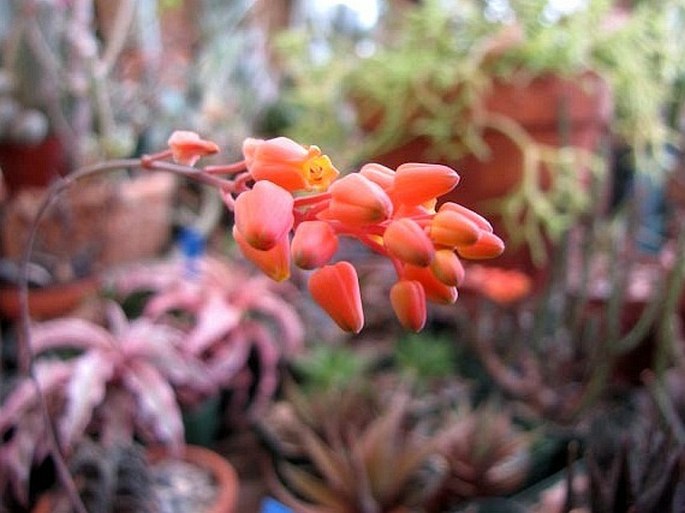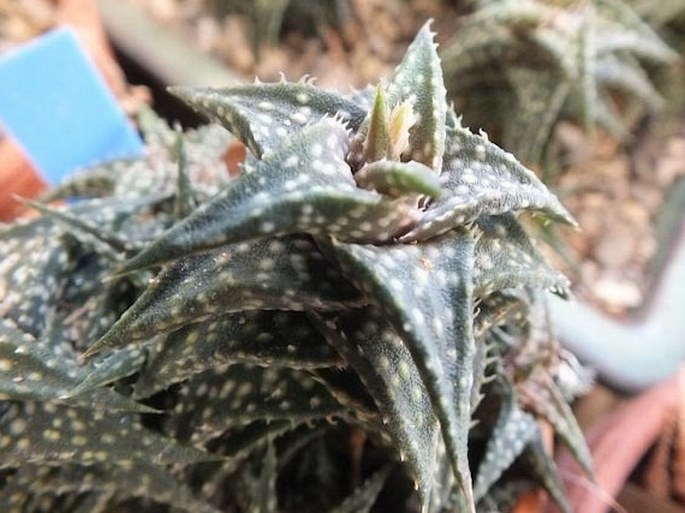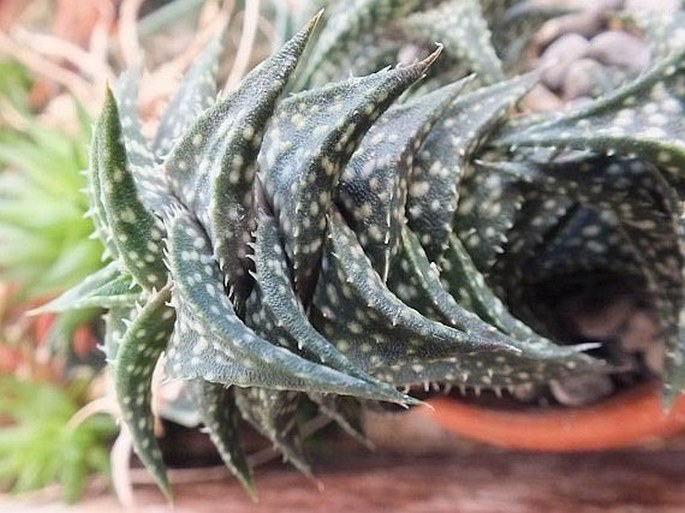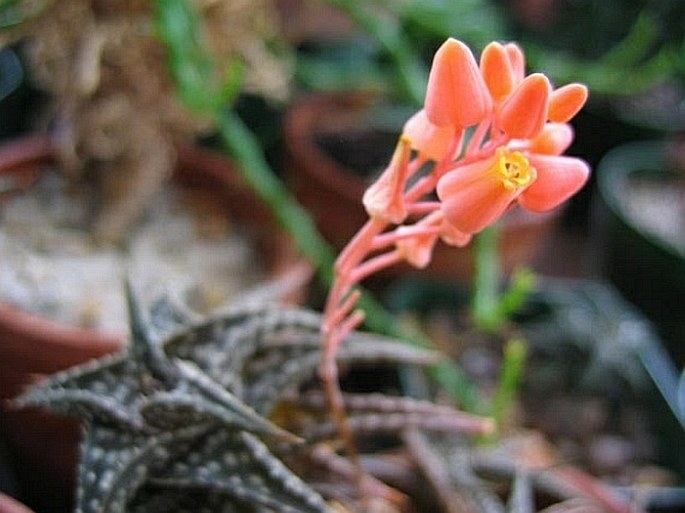Syn.: Guillauminia descoingsii (Reynolds) P. V. Heath
Family: Asphodelaceae Juss.

Distribution: Endemic to Madagascar, Tulear Province.
Ecology: Found on top of limestone cliffs in scanty soil, facing south, elevation 350 m.
Description: Plant succulent, suckering freely and forming dense cushions. Leaves on wild plants 8–10, densely rosulate, ovate-attenuate, up to 30 mm long, 15 mm broad at base, spreading to recurved; upper surface flat at base, canaliculate upwards, rough to touch, dull green with numerous dull white tubercular excrescences throughout giving a white-spotted effect; lower surface rounded with the same effect as the upper surface; margins somewhat involute, armed with firm white cartilaginous deltoid teeth 1 mm long, spaced 1–1.5 mm low down, smaller upwards, absent near apex. Inflorescence simple, 12–15 cm tall, raceme capitate about 10 flowered; youngest buds obliquely spreading to horizontaly disposed, open flowers nodding. Perianth scarlet, paler to slightly orange at mouth, cylindric 7–8 mm long, 7 mm diameter across the ovary, narrowing to 3 mm at the mouth. Filaments filiform, neither anthers nor stigma exserted. Ovary green, 1.5 mm long, 1 mm diameter.
Use: This plant is of easy cultivation and propagated by numerous nurseries for sale to public. The smallest aloe known.
Threat and Protection: This species is protected under CITES App.1.
Remarks: Discovered by Malagasy botanist B. Descoings in 1956 and described in 1958 by an aloe expert Gilbert Westacott Reynolds, author of definitive books on aloes of South Africa and Madagascar.




These images were taken in culture.


